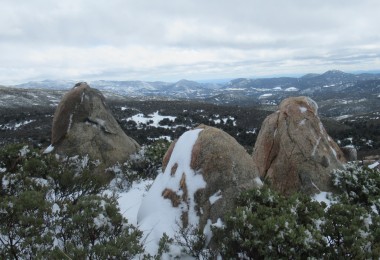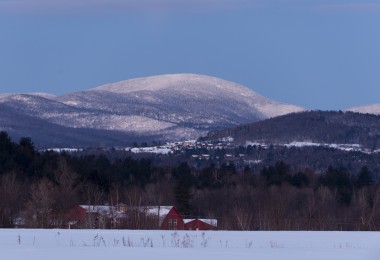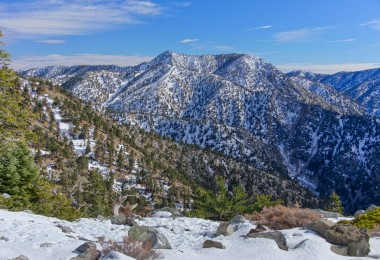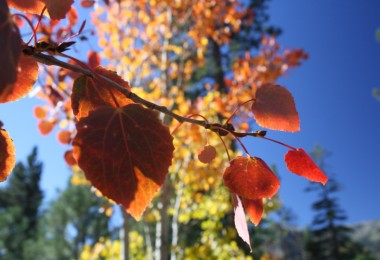Big Bear, Cali., only two hours from Los Angeles, is a playground for winter-loving southern Californians. Nestled in the mountains of the San Bernardino National Forest, Big Bear Valley receives enough snow to appease snow lovers during the winter season.
Big Bear was named for the numerous grizzly bears that inhabited the area in the 1800s. When loggers and miners moved to the area, the grizzly bears were hunted until no more remained.
Although there are no longer grizzlies, black bears do live in the San Bernardino National Forest and Big Bear Valley area. These bears were introduced to the area when they were relocated from Yosemite National Park. They now thrive in the local National Forests.
Big Bear Lake is actually a reservoir. Built in 1885, its original intent was to provide water for the citrus groves below the mountains. The groves are long gone, but the lake is still useful: It supports a variety of birds, fish, and mammals.
Places to snowshoe around Big Bear Lake are plentiful. Near the north shore of the lake, just south of Highway 38, there are level walking paths that are perfect for snowshoeing. On the north side of Highway 38 are well-marked trails. Stop by the Big Bear Discovery Center just east of Fawnskin and ask about the best places to hike or snowshoe.
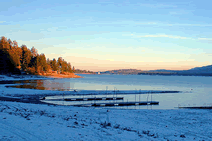
I’ve snowshoed on 2N10 just above the Snow Summit and Bear Mountain resorts. The road winds through a forest of white fir and Jeffery pine. From the Big Bear dam, drive on Big Bear Boulevard to the south side of the lake, heading towards Bear Mountain Resort. Take a right onto Moonridge Road. There will be a fork in the road. Veer right onto Clubview Drive towards Bear Mountain. The resort will be directly in front of you. Take a right onto Radford Road, San Bernardino National Forest road 2N10. You will pass several homes before you reach the parking area and closed gate. Park your vehicle in the lot just before the gate. You may need to park below the lot if it seems as if everyone is out for a day of snowplay.
A National Forest Service Adventure Pass will be necessary to avoid parking tickets. If you do not have four-wheel drive, you probably won’t be able to safely drive up the road to the lot when it is snow-covered and icy. There is little street parking. Make sure to pay attention to the “No Parking” signs and be respectful of residents’ homes and driveways.
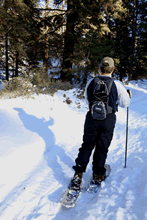
Radford Road (2N10) will have a good covering of snow in the winter. You can make this outing as short or as long as you like because the road meanders through the National Forest for several miles and intersects with other prime snowshoeing trails, including 2N08, about five miles west on 2N10. The terrain is gentle to moderate. The first couple miles are often plowed since this is an access road between the ski areas. There should still be a safe, but thin, covering of snow. After you pass the intersection with the Snow Summit access road, the road should be unplowed and fresh powder should abound. Keep an eye out for signposts at the intersections indicating the direction of 2N10. I have often found the brown signposts snow-covered and blending with the landscape.
There are great opportunities for wildlife viewing since Big Bear Valley is teeming with life. You’ll surely see the typical chipmunks, squirrels, and raccoons, but keep a sharp watch out for the lake’s other residents.
The magnificent bald eagle winters at Big Bear Lake between November and April. The eagles fly south where the lakes aren’t frozen over in the winter. At these unfrozen lakes, they catch easily accessible fish and birds.
Bring your binoculars and look for eagles at the top of dead trees near the water’s edge. The eagles have a superior view of the lake surface from the treetops. They will swiftly plunge towards the water’s surface to grasp fish with their sharp talons, unlike the osprey who actually dives into the water after its prey.
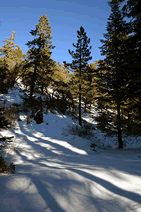
Watch out for areas around the lake closed to all traffic. This is to ensure that the eagle’s habitat is not disturbed. Loud noises and sudden movements agitate the eagles. Most forest closures are on the north shore.
The San Bernardino National Forest coordinates a local bald eagle census. The first bald eagle count of 2005 was conducted on Jan. 8. Volunteers who braved stormy and snowy conditions spotted only one eagle. The low count was attributed to the severe weather. According to the press release from the San Bernardino National Forest, the January average since 1978, when counts coordinated by the U.S. Forest Service began, is 16 bald eagles. If you’d like to volunteer for the bald eagle count, two more are scheduled for this season: Feb. 12 and March 12.
Look for mule deer feeding in the early evening. Beavers reside along the shores. Little brown bats are active at dawn and dusk. At the Discovery Center, look for bat houses in the trees near the parking lots.
Great Blue Herons linger at the lake’s edge waiting patiently for the right moment to grab fish or frogs from the water. American coots are numerous in the winter. You can identify them by their grayish-black feathers, white beaks, and harsh clucking and grunting noises.
Bobcats live in the area, but are seldom seen as they are very shy and avoid humans. I have seen two bobcats in the National Forest, but over a period of four years. Seeing a bobcat gliding through fresh snow made me pause to reflect on nature’s diversity and beauty.
Mountain lions also inhabit the area and prey on mule deer. They are elusive and rarely seen. Do look for their tracks in the snow when you are on the trails.
It is worth your time to stop at the Big Bear Discovery Center, located north of Big Bear Lake on North Shore Drive (Highway 38) between Fawnskin and Stanfield Cutoff. The Discovery Center has maps and information on the Big Bear area, as well as educational exhibits on native plants, wildlife, and local history. Volunteers can answer questions about the area. In the winter, a telescope is often set up for bald eagle viewing. Volunteers help visitors view bald eagles without disturbing the sensitive birds. Seasonal tours of the area are also offered.
Directions from the Los Angeles area: Take 10 East towards San Bernardino. Take 30 north to 330 North/MTN RESORTS. 330 N turns into CA-18. When you reach the Big Bear Lake Dam, turn right for Big Bear City and the ski resorts. Otherwise, head straight, left of the lake, to North Shore Drive/Highway 38 for the Big Bear Discovery Center.
For more information on Big Bear bald eagles and the eagle count, visit the Big Bear Discovery Center: 41397 State Hwy 38, Fawnskin, CA 92333.

